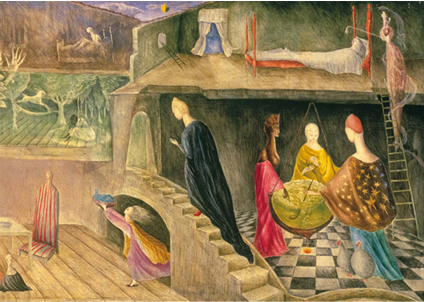AT THE AGE of fourteen, she is said to have lifted her skirts to a Catholic priest. The story has it that she had no underwear on. ''What do you think of that?'' she asked. His answer, sadly, is unrecorded. The daughter of a Lancashire cotton tycoon and an Irish gypsy with social pretensions, she seems to have spent much of her youth strenuously disappointing her parents. She was expelled from two schools for ''general insubordination'', but her most decisive act of rebellion came when, as a 19-year-old debutante in London, she met the Surrealist painter Max Ernst and ran away to Paris with him. Within five years she had broken up with Ernst, suffered a nervous breakdown and settled in Mexico, to pursue her chosen career as a painter and writer. Her admirers consider her to be the grand old lady of Surrealism, and one of the movement's last survivors.
''Leonora Carrington'', at the Serpentine Gallery, is a retrospective with revisionist intent. Carrington, it is argued here, is a major but neglected Surrealist, the victim of patriarchal art history and of her own decision to live and work far from the marketing capitals of the art world. The Serpentine show, the first serious survey of her art yet undertaken, aims to set the record straight.
Carrington's art has commonly been considered, if at all, as a sort of footnote to Max Ernst studies. Ernst himself was partly responsible for this. Early in their relationship, he christened Carrington his ''Bride of the Wind'', an act of renaming which suggests the proprietorial nature of his devotion to her. He envisaged her both as muse and, in an introduction he wrote to her first volume of stories (preserved under glass at the Serpentine), as a kind of holy idiot. She came to...


